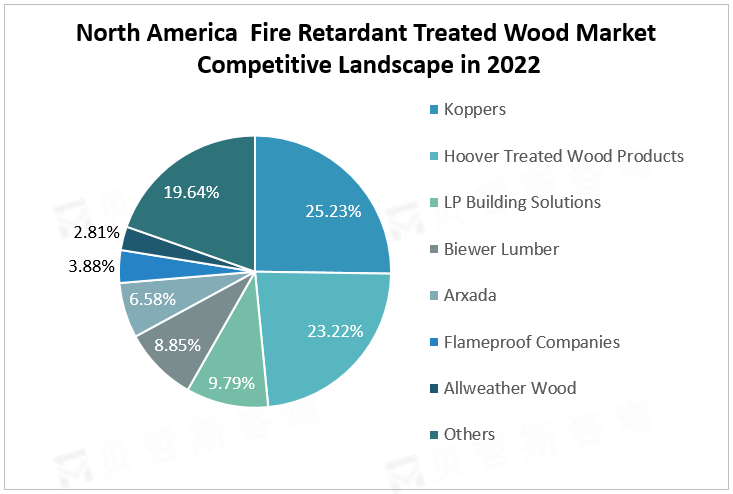Fire retardant treated wood (FRTW) refers to wood impregnated with specialized flame retardant chemicals under high pressure. These chemicals insulate the underlying wood and reduce the amount of heat/combustible volatiles released during a fire, thus preventing the spread of internal fires. Compared with untreated wood, flame-retardant treated wood can effectively inhibit the spread of flame and control the amount of smoke, while having a certain lethality to bacteria and insects, and has the effect of anti-corrosion and anti-moth.
The working principle of flame retardant wood treatment is: when the temperature reaches 272 degrees Celsius, the flame retardant begins to react to play a flame retardant, and the untreated wood at this temperature has already caught fire and burned. The flame retardant converts wood tar into coal coke to form an isolation layer, prevents the energy exchange between the wood and the surrounding environment, cuts off the oxygen supply, and plays the role of heat absorption, heat dissipation and heat insulation, thus effectively inhibiting the thermal decomposition and fire of the wood. Water vapor and other inert gases produced by thermal decomposition during the flame retardant reaction reduce the oxygen concentration around the wood product, interrupting the combustion chain reaction.
Common product types in the flame-retardant treated wood market include wood panels, siding, medium density fiberboard (MDF), and sheathing. Among them, flame retardant wood is the most widely used, and the market size of flame retardant wood in 2022 was $92 million, with a market share of 50.85%; Followed by flame retardant sheath, the market share of 20.57%. Medium density fiberboard (MDF) is made from hardwood or cork residue broken down into wood fibers, usually in a defibrillator, which is combined with wax and resin adhesives and subjected to high temperatures and pressures to form the sheet. In 2022, the MDF market size was $4 million, accounting for 2.20% of the market. In 2022, the total market size of flame-retardant treated wood in North America was $181 million and is expected to increase to $224 million by 2028.
Fire Retardant Treated Wood (FRTW)Market Size and Share Statistics by Product Type in 2022
|
Types |
Market Size(M USD) |
Market Share |
|
Lumber |
0.92 |
50.85% |
|
Siding |
0.31 |
17.33% |
|
MDF |
0.04 |
2.20% |
|
Sheathing |
0.37 |
20.57% |
|
Others |
0.16 |
9.05% |
|
Total |
1.81 |
100.00% |
Source: www.globalmarketmonitor.com
From the perspective of market competition, the North American FIRE retardant treated wood market has a high concentration, and the market share of Top3 enterprises in 2022 is 58.24%. The Top3 companies were Koppers and Hoover Treated Wood Products, Inc. And LP Building Solutions, whose market revenue share in 2022 will be 25.23%, 23.22% and 9.79%, respectively.
Koppers is an integrated global producer of carbon compounds, chemicals and treated wood products for the aluminum, rail, specialty chemicals, utilities, rubber, steel, residential wood and agricultural industries. Headquartered in Pittsburgh, Pennsylvania, USA, Koppers provides customers with a comprehensive global manufacturing and distribution network through facilities located throughout North and South America, Europe, Australia, New Zealand and Asia. Hoover Treated Wood Products, Inc. Since its inception in 1955, it has offered a comprehensive portfolio of pressure impregnated kiln-dried wood and plywood products for flame retardant and corrosion resistant applications.
North America Fire Retardant Treated Wood Market Competitive Landscape in 2022

Source: www.globalmarketmonitor.com
We provide more professional and intelligent market reports to complement your business decisions.